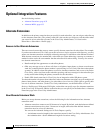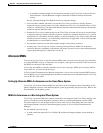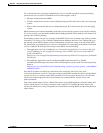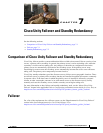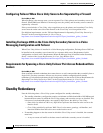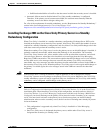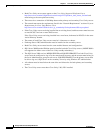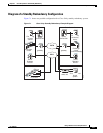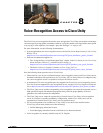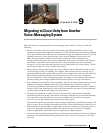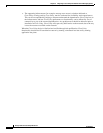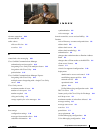
7-4
Design Guide for Cisco Unity Release 5.x
OL-14619-01
Chapter 7 Cisco Unity Failover and Standby Redundancy
Standby Redundancy
• Both Cisco Unity servers must appear on the Cisco Unity Supported Platforms List at
http://www.cisco.com/en/US/products/sw/voicesw/ps2237/products_data_sheets_list.html and
must belong to the same platform overlay.
• There must be a connection of 100 Mbps between the primary and secondary Cisco Unity servers.
• The network must meet the requirements listed in the “Network Requirements” section of System
Requirements for Cisco
Unity Release 5.0 at
http://www.cisco.com/en/US/docs/voice_ip_comm/unity/5x/requirements/50cusysreq.html.
• If the Cisco Unity servers are being installed into an existing forest, both data centers must have one
or more DC/GCs and one or more DNS servers.
If the Cisco Unity servers are being installed into a new forest, both must be DC/GCs in the same
Active Directory domain.
• The names of both Cisco Unity servers must be 14 characters or shorter.
• Exchange Server 2003 administration must be installed on the secondary server.
• Both Cisco Unity servers must have the same enabled features and configurations.
• SQL Server 2000 Standard Edition must be installed on both Cisco Unity servers. (MSDE 2000 is
not supported on either server with Cisco
Unity standby redundancy.)
• The SQL Server 2000 services MSSQLSERVER and SQLSERVERAGENT on both Cisco Unity
servers must be configured to log on as the same domain account, and the account must belong to
the Local Administrators group on each server. SQLSERVERAGENT on the primary server must
be able to log on to SQL Server on the secondary server by using Windows NT authentication.
• All software must be installed on the same drive and directories for both primary and secondary
servers.
• The Cisco Unity servers must have Cisco Unity 5.0(1) ES1 installed.



